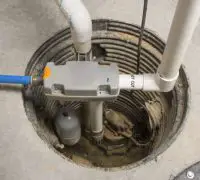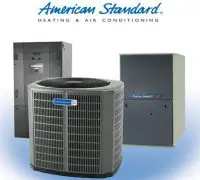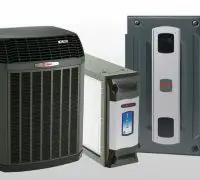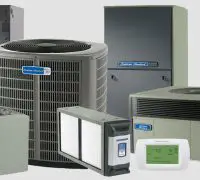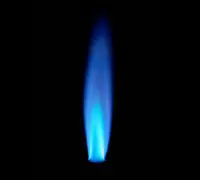It’s only a matter of time until you start decorating for Christmas (unless you’ve done it already), and it’s apparent that you’ve turned on the heat by now too. It gets chilly in the morning and at night, so you should make sure to have not only the beautiful Christmas decorations but also a properly operating furnace.
Should you have an oil heating furnace, you may already know that risk for troubleshooting is never null. Maintenance is vital for durable furnaces, but some problems may always occur. Scroll down to see a general view of the most common issues of oil heating furnaces.
Page Table of Contents
1. The furnace won’t turn on
The tripped reset button is one of the most typical causes for a non-working oil heating furnace. It’s not a very complicated problem, and you only have to identify and press the button. Commonly, it’s a red button on the burner motor on the new models.
An older model doesn’t have a visible button, so you should check the primary control panel. After you’ve pressed the reset button, you will get more oil into the heating combustion chamber. Make sure only to press it once, as if you press it several times, you may flood the furnace mechanism with too much oil.
A blown circuit can also make the oil heating furnace not to run, so take a look at the fuse box too. The motor may burn out, so you will have to replace it.
2. The indoor temperature is very low
Sometimes, the burner runs and the flame lights as it should, so everything looks properly running with your furnace. However, you may still have a relatively cold temperature, and the air filter could be the culprit.
A clogged and dirty filter will impact the flow of heater air, and replacing the filter is the leading solution. You will have to follow the proper steps for replacing the filter, from selecting the appropriate model to installing it.
Should you replace the filter and still feel the temperature lower than expected, a malfunctioning fan could be the problem. Older systems are prone to developing the issue. If the furnace is new and you don’t need to replace any parts, the house’s ductwork generates the problem. Worn out or weak spots may affect the airflow from the furnace to your household.
Side note
Sometimes, even a wrongfully sized return-air duct will affect the airflow. For example, a tiny and undersized hole behind the grill for running the return air will impact the warm air’s proper circulation. Your furnace could be working just fine, but the wrong size return-air duct will restrict the circulation of the heated air, rending the house’s temperature to feel colder.
3. The burners don’t generate flames
A clogged burner nozzle is the most common cause for burners not to create flames. It’s common for oil heating furnaces to develop clogging, as the tip is typically narrow. Water or debris clogs the tip, so cleaning is essential for helping the burner generate the flame.
You should call the HVAC professional to clean the clogged tip, especially since the burner nozzle is inexpensive and easy to replace.
A shorted-out transformer/cracked electrical wires will also make the burners not to produce a flame. You will have to replace them so that the furnace powers on properly.
4. Smoke and soot are coming out of the registers
Several aspects could cause the oil heating furnace to throw smoky air, with clogged chimneys and clogged flue pipes as the most common. Clogged or cracked heat exchangers can also lead to soot and smoke.
A cracked heat exchanger will require replacement soon enough, whereas proper maintenance will reduce the risk for these problems to occur. Sometimes, the door to your oil heating furnace panel becomes warped, sending smoke into the attic crawl space/basement. The furnace fan will blow the smoke throughout the house.
When the furnace blows dirty air, the combustion chamber is the first one to check. You will have to examine the inspection door to the combustion chamber, placing the palm near the opening. If it’s possible to keep your hand there without any discomfort, there’s no blockage to deal with. However, if it’s too hot and smoke comes out, something makes the heat back out of the chamber.
5. You use more fuel than usual
When you notice that the furnace’s fuel runs out faster than usual, several aspects could generate the problem. A wrongfully sized furnace is a common reason, but nozzle replacement could also be necessary, as the one you have now doesn’t match the system.
Another solution is to adjust the control panel or address ductwork, replacing any leaking ducts. When you try these solutions, you will notice that the system works better, and the utility bill will go back to normal.
When you’re using more oil than usual, the furnace may request cleaning. Cold drafts in poorly windows or doors could also generate the problem, so proper steps will be necessary for solving the problem.
Side note
It will help if you run a load calculation to identify the proper size and mount a rightfully sized unit. Use the special tools to make the adjustments. Also, make sure to mount the appropriate nozzle and skip checking and adjusting the oil pump pressure. Don’t forget to insulate ductwork and seal any duct leaks for the heating system’s compelling performance. It’s not a bad idea to also add some energy conservation items, keeping the windows and doors closed when you want heated air inside the house.
One last piece of advice
When it comes to furnaces, professional and regular maintenance is fundamental for effective operation. You should examine the fuses, replace the air filters, and check all the components now and then. You want to service the furnace so that it runs excellent and smoothly in the winter. Always keep the oil level at the recommended levels so that the hoses don’t clog and mechanisms don’t stop running. Some issues with your oil furnaces have easy fixes, but most of the problems will require professional servicing, especially in modern furnaces. The new models are complicated on the inside, and specialized tools are necessary for replacing the components. Unless you’re an HVAC technician, you should always call the professionals when your oil heating furnace doesn’t run properly.

